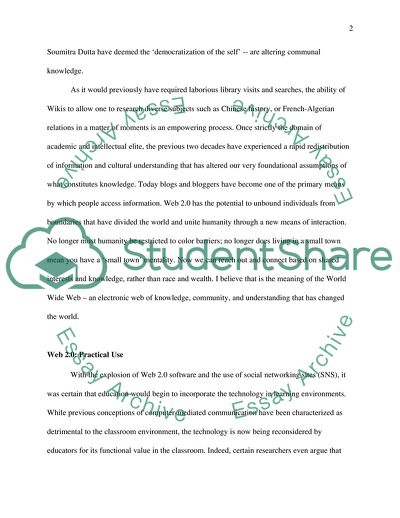Cite this document
(Web 2.0: Practical Use Report Example | Topics and Well Written Essays - 1250 words, n.d.)
Web 2.0: Practical Use Report Example | Topics and Well Written Essays - 1250 words. https://studentshare.org/information-technology/1736613-web-2o
Web 2.0: Practical Use Report Example | Topics and Well Written Essays - 1250 words. https://studentshare.org/information-technology/1736613-web-2o
(Web 2.0: Practical Use Report Example | Topics and Well Written Essays - 1250 Words)
Web 2.0: Practical Use Report Example | Topics and Well Written Essays - 1250 Words. https://studentshare.org/information-technology/1736613-web-2o.
Web 2.0: Practical Use Report Example | Topics and Well Written Essays - 1250 Words. https://studentshare.org/information-technology/1736613-web-2o.
“Web 2.0: Practical Use Report Example | Topics and Well Written Essays - 1250 Words”. https://studentshare.org/information-technology/1736613-web-2o.


